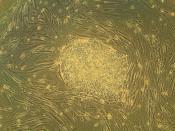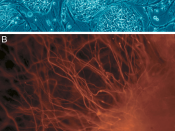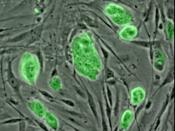Science Assignment
Intro
Embryonic stem cells are removed from week old human embryos then undifferentiated, which is they have not begun to specialise - become specific cells within the body. They have the ability to form any adult cell. Because undifferentiated embryonic stem cells can proliferate indefinitely in culture, they could potentially provide an unlimited source of specific, clinically important adult cells such as bone, muscle, liver or blood cells. This is why the use of embryonic stem cells to repair damaged tissue and organs is the right thing to do.
Major issues and Embryonic Stem Cells Defined
In theory, if stem cells can be grown and their development directed in culture, it would be possible to grow cells of medical importance such as bone marrow, neural tissue or muscle. The first potential applications of human embryonic stem cell technology may be in the area of drug discovery. The ability to grow pure populations of specific cell types offers a proving ground for chemical compounds that may have medical importance.
Treating specific cell types with chemicals and measuring their response offers a short-cut to sort out chemicals that can be used to treat the diseases that involve those specific cell types. Stem cell technology, therefore, would permit the rapid screening of hundreds of thousands of chemicals that must now be tested through much more time-consuming processes
Positives
Embryonic stem cells are of great interest to medicine and science because of their ability to develop into virtually any other cell made by the human body. The ability to grow human tissue of all kinds opens the door to treating a range of cell-based diseases and to growing medically important tissues that can be used for transplantation purposes. For example, diseases like juvenile onset diabetes mellitus and Parkinson's disease occur because of...



Well done
Nice work short and to the point. As a senior essay I would try to lengthen it a little and polish up the languaged used.
"It will help people now and for sure in the long run" This is perhaps a too casual for a formal essay
1 out of 1 people found this comment useful.